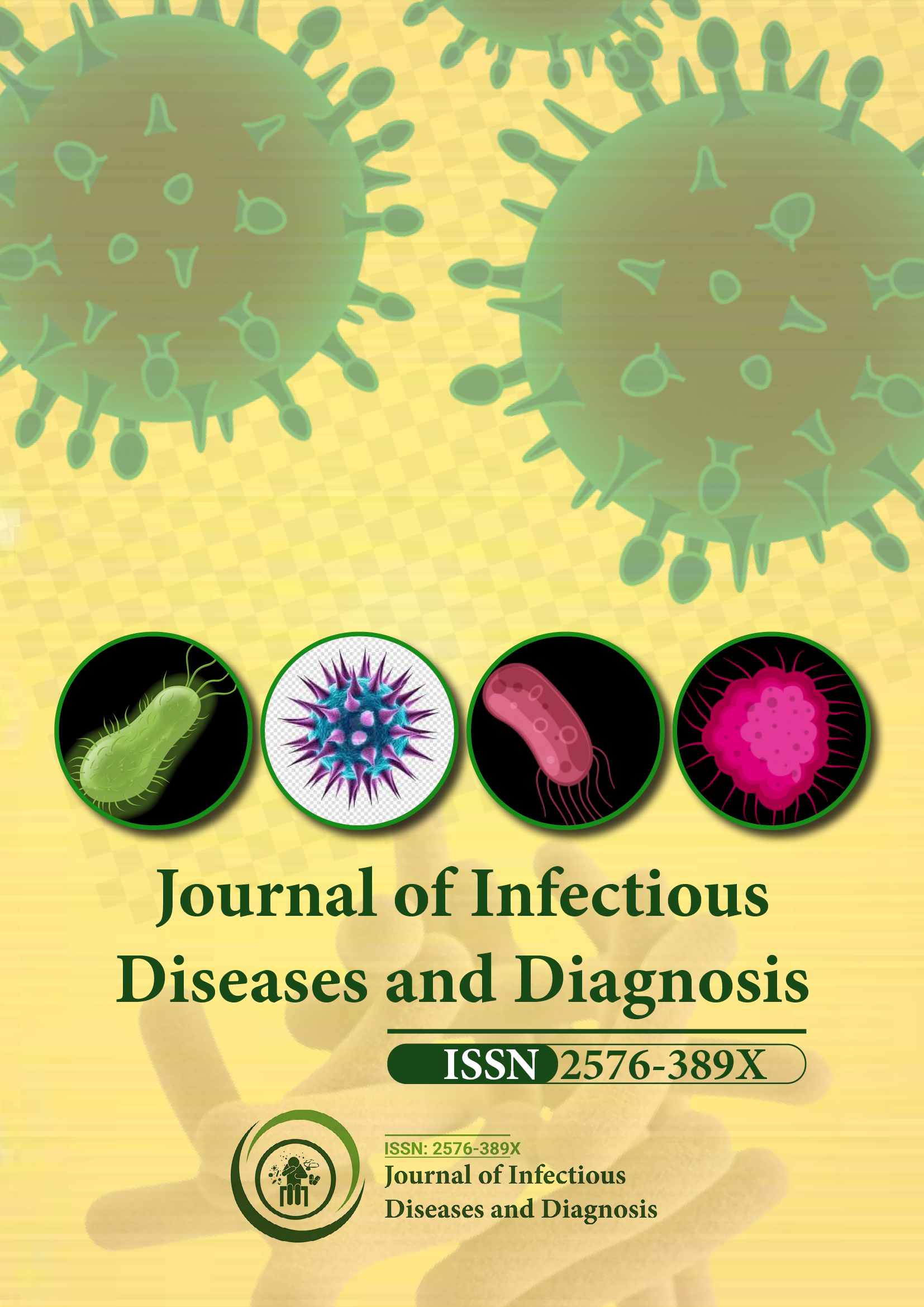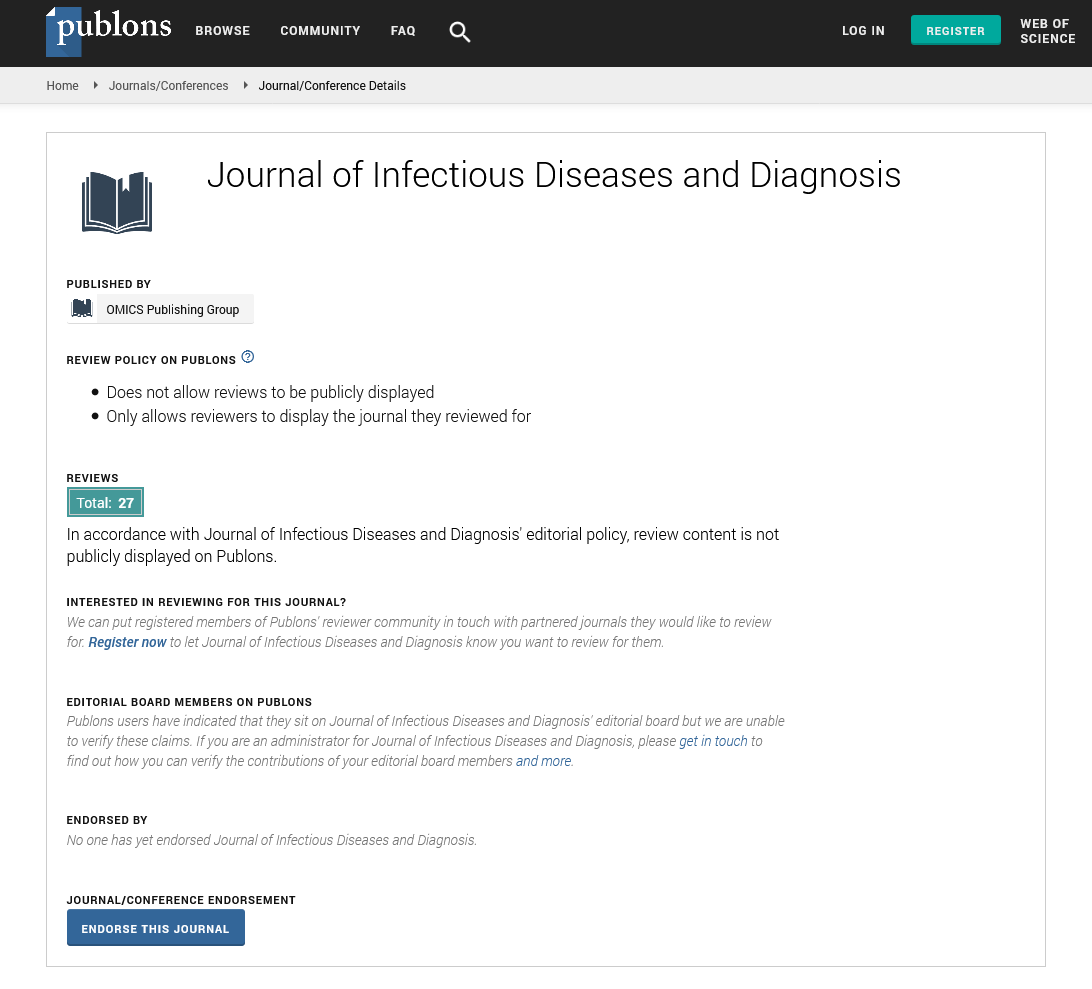Indexed In
- RefSeek
- Hamdard University
- EBSCO A-Z
- Publons
- Euro Pub
- Google Scholar
Useful Links
Share This Page
Journal Flyer

Open Access Journals
- Agri and Aquaculture
- Biochemistry
- Bioinformatics & Systems Biology
- Business & Management
- Chemistry
- Clinical Sciences
- Engineering
- Food & Nutrition
- General Science
- Genetics & Molecular Biology
- Immunology & Microbiology
- Medical Sciences
- Neuroscience & Psychology
- Nursing & Health Care
- Pharmaceutical Sciences
Commentary - (2025) Volume 10, Issue 2
Chlamydia Infections: Clinical Manifestations, Complications and Strategies for Prevention
Hideo Yasui*Received: 25-Feb-2025, Manuscript No. JIDD-25-28673; Editor assigned: 27-Feb-2025, Pre QC No. JIDD-25-28673 (PQ); Reviewed: 14-Mar-2025, QC No. JIDD-25-28673; Revised: 21-Mar-2025, Manuscript No. JIDD-25-28673 (R); Published: 28-Mar-2025, DOI: 10.35248/2576-389X.25.10.327
Description
Chlamydia trachomatis is one of the most common bacterial Sexually Transmitted Infections (STIs) worldwide. Despite its often asymptomatic presentation, the infection can lead to serious health complications if left untreated. Chlamydia infection, caused by Chlamydia trachomatis, is a major public health issue, particularly among adolescents and young adults. The World Health Organization estimates that more than 129 million new cases occur annually. Due to its silent nature, many individuals remain undiagnosed, allowing for ongoing transmission and the development of long-term complications.
Etiology and pathogenesis
Chlamydia trachomatis is an obligate intracellular bacterium that infects epithelial cells of the genital tract, rectum and conjunctiva. It has a unique developmental cycle, alternating between two forms: The Elementary Body (EB), which is the infectious form and the Reticulate Body (RB), which replicates inside host cells. Once inside the host, the bacterium avoids immune detection, enabling persistent infection. This mechanism plays a role in tissue damage and inflammation, which are associated with disease symptoms and complications.
Modes of transmission
The infection is primarily transmitted through sexual contact, including vaginal, anal and oral sex. It can also be passed from mother to child during childbirth, potentially leading to neonatal conjunctivitis or pneumonia. Non-sexual transmission is rare but has been documented through contaminated surfaces in neonatal settings.
Clinical manifestations
A significant challenge in managing Chlamydia is its tendency to present without symptoms. Approximately 70%-80% of infected women and 50% of infected men do not exhibit any noticeable signs. When symptoms occur, they may include:
In women: Abnormal vaginal discharge, dysuria, lower abdominal pain, dyspareunia and post-coital bleeding. If untreated, it can progress to Pelvic Inflammatory Disease (PID), which may cause infertility, ectopic pregnancy, or chronic pelvic pain.
In men: Urethral discharge, dysuria, testicular pain or swelling (epididymitis) and occasionally prostatitis.
Rectal infections: Pain, discharge and bleeding, often seen in individuals engaging in receptive anal intercourse.
Ocular infections: Conjunctivitis in neonates and adults through autoinoculation.
Diagnosis
Laboratory testing is essential for diagnosis, especially given the high rate of asymptomatic cases. Nucleic Acid Amplification Tests (NAATs) are the preferred method due to their high sensitivity and specificity. These tests can be performed on urine samples, vaginal swabs, or other relevant specimens, allowing for both convenience and accuracy.
Treatment
Chlamydia is curable with appropriate antibiotics. The most commonly prescribed regimens include:
• Doxycycline 100 mg orally twice daily for seven days
• Azithromycin 1 g orally in a single dose (used especially in pregnancy)
It is important for all sexual partners to be tested and treated to prevent reinfection. Patients are typically advised to abstain from sexual activity for at least seven days after initiating treatment.
Complications
When not addressed promptly, Chlamydia can result in significant reproductive health problems. In women, ascending infection can damage the fallopian tubes, leading to infertility and increased risk of ectopic pregnancy. In men, prolonged infection may lead to epididymitis or urethritis. Reactive arthritis, formerly known as Reiter’s syndrome, is another recognized complication, more common in men.
Epidemiology and risk factors
Chlamydia infection is most prevalent among individuals aged 15-24 years. Risk factors include early onset of sexual activity, multiple sexual partners, inconsistent condom use and previous history of STIs. Socioeconomic disparities and limited access to healthcare services further contribute to the disease burden in low-resource settings.
Prevention strategies
Efforts to reduce the spread of Chlamydia include routine screening, particularly for sexually active women under 25 and high-risk groups. Public health campaigns focusing on safe sex practices, condom use and regular health checkups play an important role. Partner notification and treatment are also essential components of disease control.
School-based sexual education programs, community outreach and destigmatizing discussions around STIs can support healthier behaviors. In some countries, home-based test kits have also been introduced to increase testing rates and overcome barriers to clinic visits.
Global health implications
Chlamydia remains a significant health concern globally due to its prevalence and long-term consequences. Health systems, especially in developing regions, face challenges in providing widespread testing and treatment services. Strengthening surveillance systems, increasing funding for STI prevention programs and integrating Chlamydia screening into routine health checks can help reduce transmission.
Conclusion
Chlamydia infection, while common and often silent, has a significant impact on individual and public health. Early detection, appropriate treatment and comprehensive education are key strategies in managing the infection. Continued efforts in research, healthcare access and public awareness are essential for reducing its burden and protecting reproductive health across populations.
Citation: Yasui H (2025). Chlamydia Infections: Clinical Manifestations, Complications and Strategies for Prevention. J Infect Dis Diagn. 10:327.
Copyright: © 2025 Yasui H. This is an open-access article distributed under the terms of the Creative Commons Attribution License, which permits unrestricted use, distribution and reproduction in any medium, provided the original author and source are credited.

